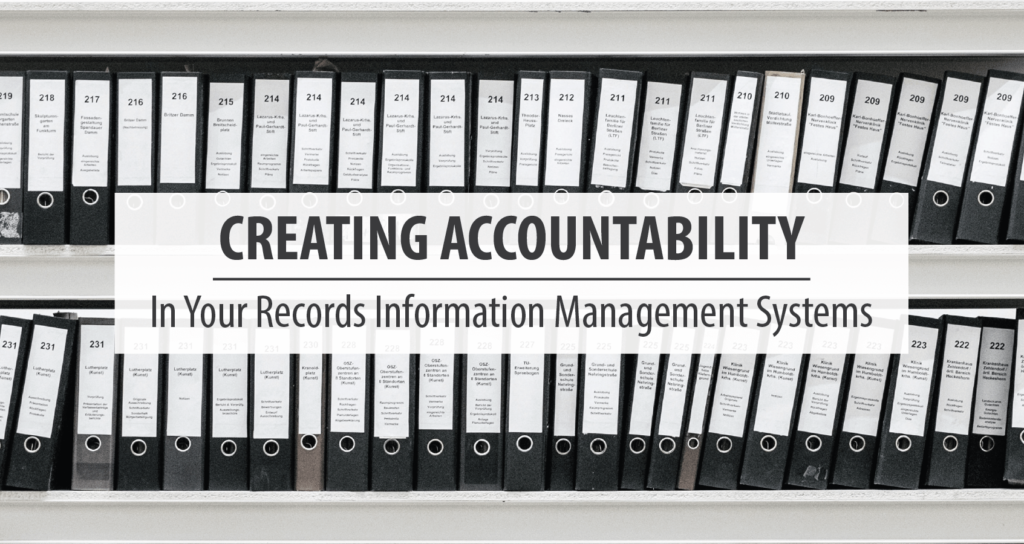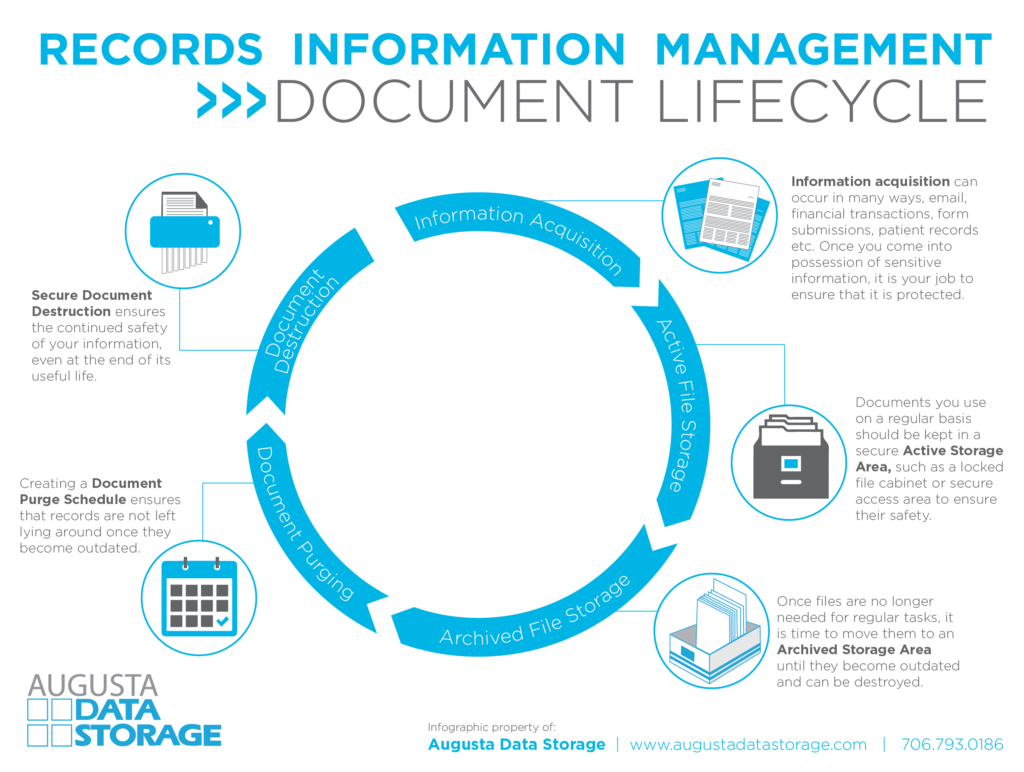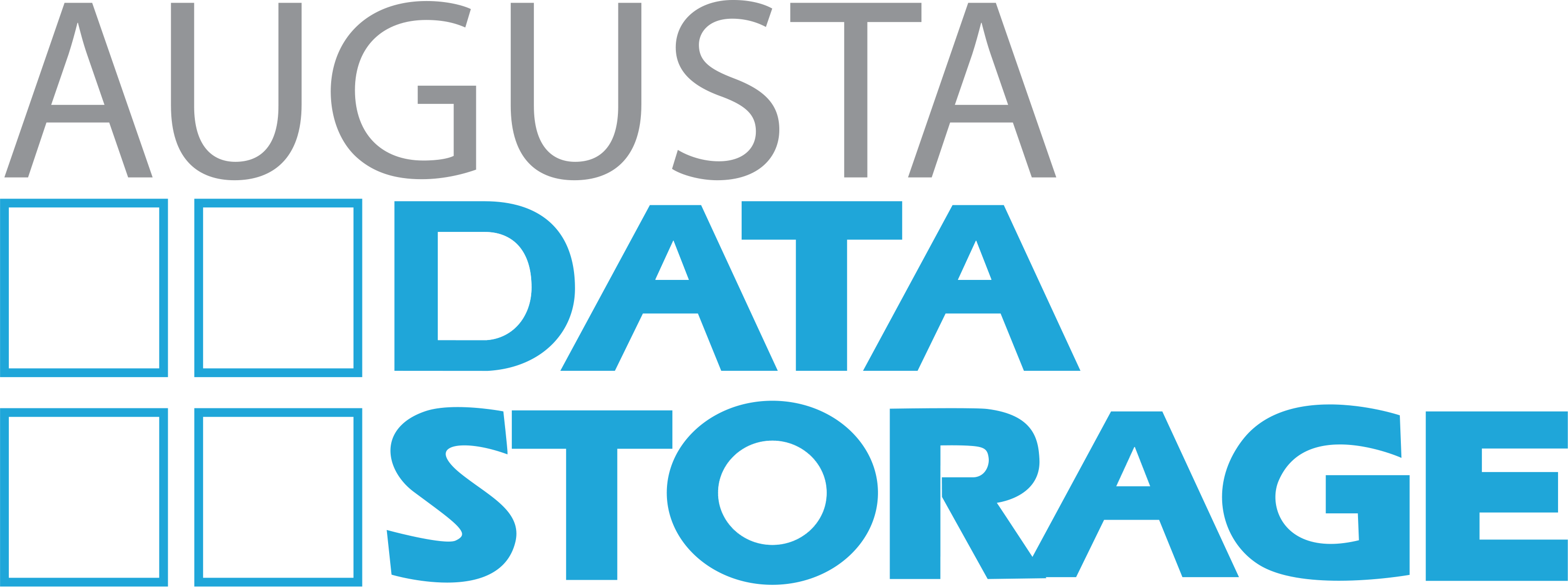Creating Accountability in Your Records Information Management Processes

Developing Records Information Management (RIM) processes for any business requires the coordination of various aspects of how people use, store, transfer, and dispose of the records you manage.
A comprehensive RIM process outlines details about how to manage and oversee information security during every step of the document life-cycle, but one of the most crucial pieces of the puzzle is creating accountability in your RIM systems.
What is the Document Lifecycle?
The document lifecycle outline below represents the various stages that information in your business might travel through, from the time it is created until it is securely destroyed.

This lifecycle includes
- Information acquisition: when, where, and how your company collects information from employees, customers, and other individuals
- Active file storage: when, where, and how your company securely stores records while they are in use in day-to-day operation
- Archived file storage: once files are moved out of active storage and are not needed regularly, they are often referred to as archived
- Document Purging: based on the required record retention schedule for your business and your industry, regular document purges ensure that information is removed from archive storage once it is out-of-date or no longer needed.
- Secure Document Destruction: when records are routinely purged from your storage areas, secure destruction processes ensure that the integrity of your information is maintained through the end of its useful life.
Creating Accountability in RIM Processes
Developing and maintaining an effective RIM system is an on-going job. While the initial development of your policies and procedures may seem like the most in-depth portion of the process, maintaining and improving the systems over time is no small task. One of the key components to having a successful RIM process is creating accountability inside your organization.
Communication
The first step to developing accountability is communication. Take time to clearly communicate the importance of properly managing and maintaining the information that your business is entrusted with. This should be done during employee training, in staff meetings throughout the year, and via inter-office messages, memos or other signage.
You should develop procedures that clearly communicate expectations for how information should be managed, what to do if it is mismanaged or if holes are found in the systems. It’s also important to clearly communicate whyproper information management should be top-of-mind for every employee.
On-Going Education
Your processes are only as good as the people managing them. Keep your workforce up-to-date on changing threats or risks to information security. Educate them regularly on best practices, and clearly communicate any updates and changes to your companies RIM processes detailing how those changes will impact the way your employees do their jobs.
Process Audits
Regular audits and checks of your Records Information Management processes will allow you to identify “weak-links.” This gives your organization an opportunity to proactively work to improve systems, as opposed to taking the reactionary approach of managing the fall out of mishandled information.
Process Improvements
Audits should be used as a way to develop process improvements. They should check-in on various aspects of your RIM processes and record suggestions for improvement or revision so that your processes can be updated annually to reflect the current threats and operational standards in your industry.
Once these process improvements are made, the cycle starts back at the top. Communicate those changes and their impacts on your team. Educate them on why they are important and what steps your employees can take to ensure they are using information management best practices in their jobs each day. Continue to perform regular audits and make improvements to your process.
As the way we use, manage, and exchange information continues to evolve, so should your RIM processes.
If you’re interested in learning more about developing effective RIM processes or outsourcing portions of your records management process, contact Augusta Data Storage today to see how our on-site record storage, media vault storage, secure document destruction and electronic waste destruction services can improve your RIM programs.
